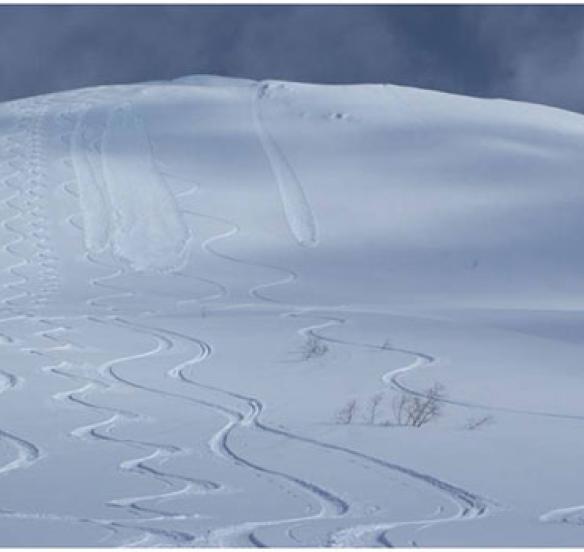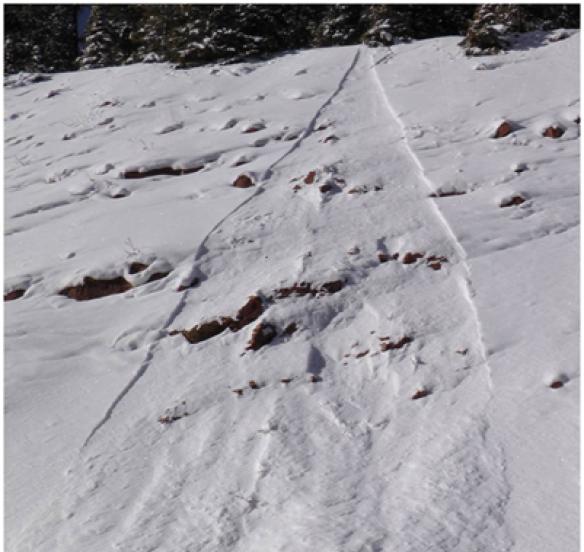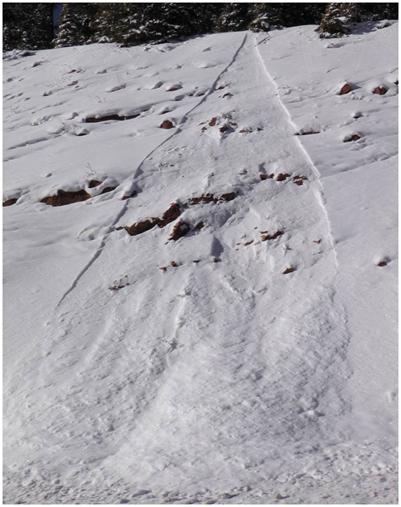Loose Dry Avalanche Type Problem
Release of dry unconsolidated snow. These avalanches typically occur within layers of soft snow near the surface of the snowpack. Loose-dry avalanches start at a point and entrain snow as they move downhill, forming a fan-shaped avalanche. Other names for loose-dry avalanches include point-release avalanches or sluffs. Loose-dry avalanches can trigger slab avalanches that break into deeper snow layers.
Loose Dry avalanches are usually relatively harmless to people. They can be hazardous if you are caught and carried into or over a terrain trap (e.g. gully, rocks, dense timber, cliff, crevasse) or down a long slope. Avoid traveling in or above terrain traps when Loose Dry avalanches are likely.
Read about Loose Dry in “Decision Making in Avalanche Terrain: a fieldbook for winter backcountry users”.
How They Form
Loose Dry avalanches occur in either soft, powdery, storm-snow, or in old, weak, faceted snow. If the entire snowpack is faceted and sugary, loose dry avalanches can run to the ground.
Where They Form
Loose Dry avalanches can exist throughout the terrain, on any aspect or elevation. They start on very steep slopes, usually 35 degrees or steeper. If they release on low-angle terrain, they are usually small slides that do not run very far.
Timing and Triggering
Most Loose Dry avalanches are a non-persistent problem and stabilize in hours or days. There tends to be a short period of frequent natural activity, which often occurs during intense snowfall or with the first sun/warming after a storm. However, human-triggering of a loose dry avalanche may be possible any time the snowpack consists of unconsolidated faceted grains. Loose Dry avalanches release below the trigger point.
Recognition
Because it is a surface problem, it is easy to feel and recognize unconsolidated snow. Recent loose-snow avalanches are a good indicator. You may see sluffs or spindrifts coming off your tracks or running on steep slopes.
Treatment and Avoidance
Loose Dry avalanches are fairly predictable and can be easily avoided. On large slopes, they can entrain a significant amount of snow and travel very fast. They are most dangerous when combined with terrain traps such as rocks, trees, cliffs, or a gulley. Avoid traveling under steep slopes during heavy snowfall or intense sunshine. Expert riders in very steep terrain can use sluff-management techniques.




